
2012: THE YEAR IN REVIEW
Top 10 stories of the year
12/30/2012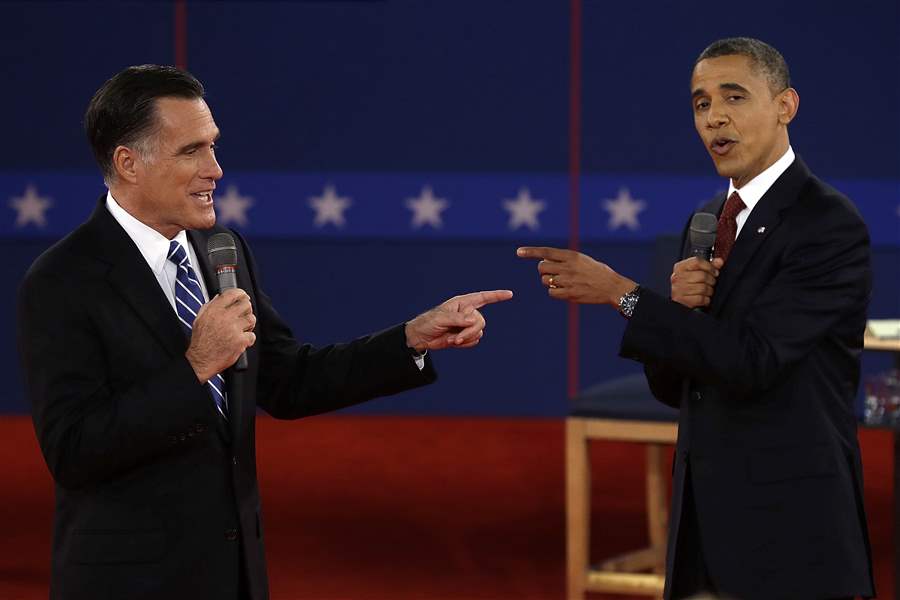
Republican presidential nominee Mitt Romney and President Obama spar during the second presidential debate in Hempstead, N.Y.
ASSOCIATED PRESS
The horrific massacre of 26 children and staff at a Connecticut school, along with other mass shootings, was the top news story of 2012, edging out the U.S. election, according to the Associated Press’ annual poll of U.S. editors and news directors. The results followed a decision by the AP to reconduct the voting, which had ended Dec. 13, a day before the Newtown shootings.
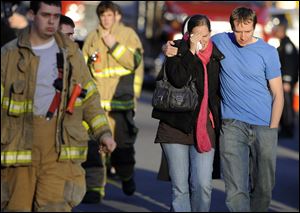
Robert and Alissa Parker leave a firehouse staging area after the shooting at Sandy Hook Elementary in Newtown, Conn., where a gunman killed 26 children and adults, including the Parkers' daughter Emilie, 6.
1. MASS SHOOTINGS: Armed with a high-powered rifle, 20-year-old Adam Lanza forced his way into Sandy Hook Elementary School in Newtown, Conn., and shot dead 20 children — all ages 6 and 7 — and six staff members in the second-worst school massacre in U.S. history. Sadly, it was only one of several mass shootings, including the killing of 12 people at a movie theater in Aurora, Colo. After the Newtown tragedy, President Obama and many others, including some staunch gun-rights supporters, said it was time to find ways to rein in gun violence.

Republican presidential nominee Mitt Romney and President Obama spar during the second presidential debate in Hempstead, N.Y.
2. U.S. ELECTION: Mitt Romney outcampaigned Republican rivals and bested President Obama in their opening debate. But on Election Day, thanks in part to a vigorous get-out-the-vote operation, Mr. Obama won a second term with a large lead in electoral votes and a solid advantage in popular votes. The GOP hung on to its majority in the House but remained a minority in the Senate.
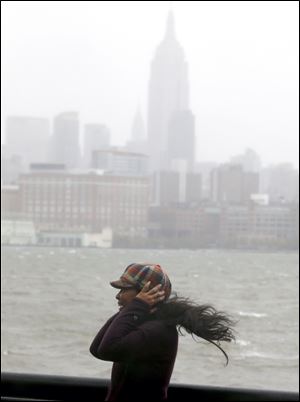
A woman covers her ears in Hoboken, N.J., as Hurricane Sandy bears down on the New York City area.
3. SUPERSTORM: As a prelude, the storm named Sandy killed more than 70 people in the Caribbean. Then its high winds and high waters slammed into more than 800 miles of the eastern American seaboard, killing at least 125 more people and causing damage calculated at well over $60 billion — the second- costliest storm in U.S. history after 2005’s Hurricane Katrina. New York and New Jersey were the worst hit during the onslaught, with several hundred thousand homes and businesses damaged or destroyed.
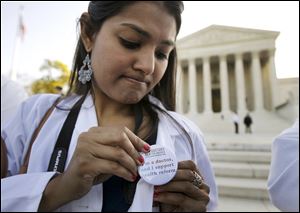
Dr. Sonia Nagda puts on a pin supporting the healthcare reform law as she gathers with other health-care professionals outside the Supreme Court.
4. OBAMACARE: By a 5-4 margin, the Supreme Court upheld the core elements of the President’s much-debated health-care overhaul. To widespread surprise, the decisive vote came from John Roberts, the conservative-leaning chief justice appointed by Republican George W. Bush. Mr. Obama’s electoral victory ensured the plan would proceed, with complex ramifications for insurers, employers, health-care providers, and state governments.
5. LIBYA: Even amid yearlong turmoil in Libya, it was a jarring incident — the Sept. 11 assault in Benghazi, widely blamed on a group with suspected links to al-Qaeda — that killed U.S. Ambassador Chris Stephens and three other Americans. The American ambassador to the United Nations, Susan Rice, later bowed out of consideration to be the next secretary of state because of her assertions in television interviews that a spontaneous demonstration over an anti-Muslim video triggered the deadly attack.
6. PENN STATE: It was a daunting year for Penn State and its storied football program. In January, longtime coach Joe Paterno died, his legacy tarnished by the sex-abuse scandal involving his former assistant, Jerry Sandusky. In June, Sandusky was convicted of sexually abusing 10 boys and was later sentenced to 30 to 60 years in prison. In July, the NCAA imposed severe sanctions on the school’s football program.
7. U.S. ECONOMY: By many measures, the economy was on a welcome upswing. The unemployment rate dipped to a four-year-low of 7.7 percent, stock markets rose, builders broke ground on more homes, and November was the best sales month in nearly five years for U.S. automakers. But overshadowing the good news was deep anxiety about the economic consequences if Mr. Obama and the Democrats failed to reach a tax-and-spending deal with the Republicans.
8. FISCAL CLIFF: Mr. Obama and Republican House Speaker John Boehner engaged in highstakes negotiations over a deal to avert the socalled “fiscal cliff” that would trigger automatic tax hikes and spending cuts. The leaders narrowed some differences on Social Security and tax rates for the wealthy, but faced intense pressure from their bases to resist certain compromises.
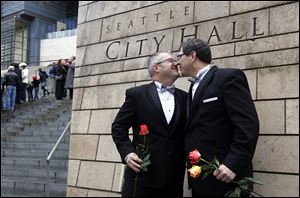
Terry Gilbert, left, celebrates with his husband Paul Beppler after their wedding at Seattle City Hall, becoming among the first gay couples to legally wed in the state of Washington.
9. GAY MARRIAGE: For supporters of same-sex marriage, it was a year of milestones. Mr. Obama, after a drawn-out process of “evolving,” said in May he supported the right of gay couples to wed. On Election Day, Maine, Maryland, and Washington became the first states to legalize gay marriage via popular vote. And on Dec. 7 the Supreme Court agreed to hear two cases that could further expand same-sex marriage rights.
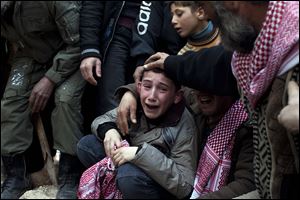
Ahmed, center, mourns his father, Abdulaziz Abu Ahmed Khrer, who was killed by a Syrian army sniper, during his funeral in Idlib in northern Syria.
10. SYRIA: What began in 2011 as an outbreak of peaceful protests escalated into full-scale civil war pitting the beleaguered regime of Bashar Assad against a disparate but increasingly potent rebel opposition. The overall death toll climbed past 40,000 as the rebels made inroads toward Assad’s bastion of Damascus. The United States and many other nations were supporting the opposition, albeit wary of outcomes that might help Islamic extremists gain power in the region.